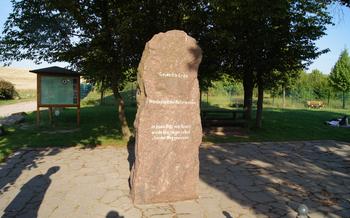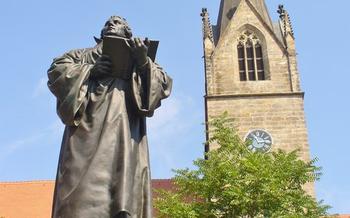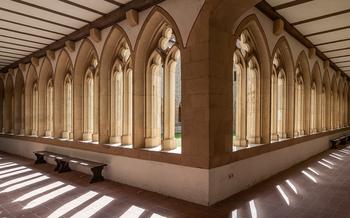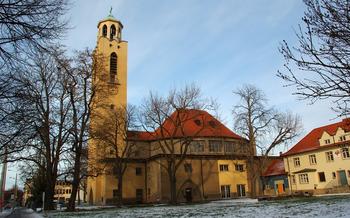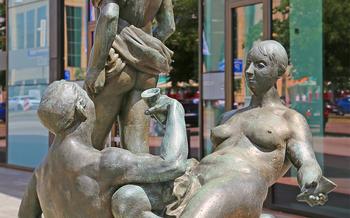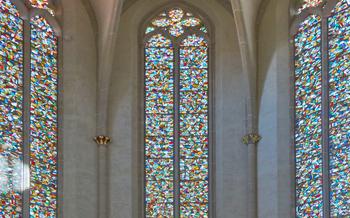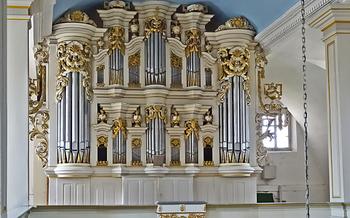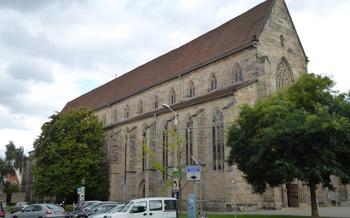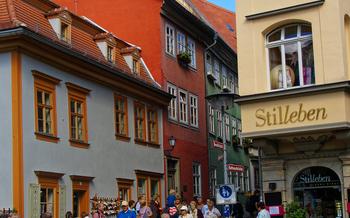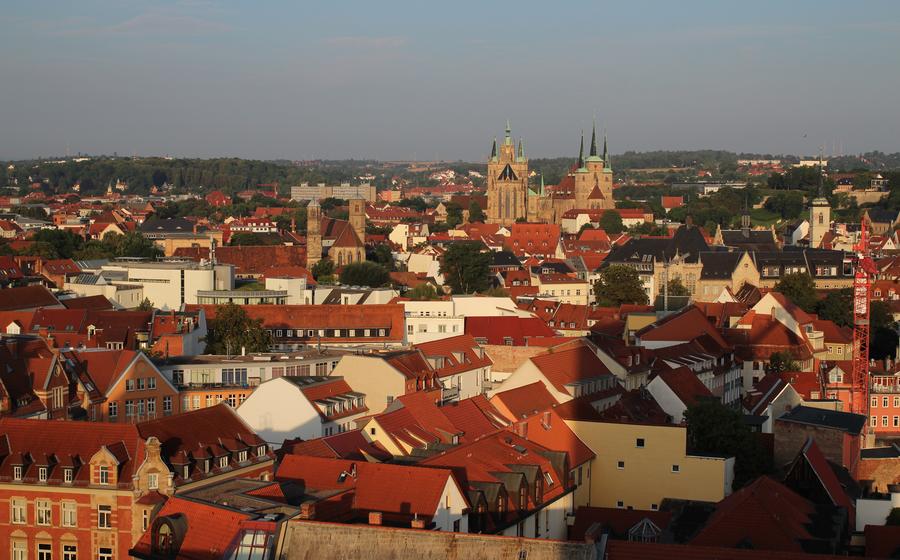
Luther's Cell in the Augustinian Monastery
- History of the Augustinian Monastery and Luther's Cell
- Location and Accessibility:
- Guided Tours
- Admission Fees and Tickets
- Opening Hours and Holidays
- Exhibits and Displays
- Luther's Room and Personal Effects
- Theological Significance
- Luther's Legacy and Impact
- Nearby Attractions and Activities
- Accessibility for Visitors with Disabilities:
- Educational Programs and Workshops
- An Insider's Look into Luther's Legacy
History of the Augustinian Monastery and Luther's Cell
The Augustinian Monastery in Erfurt, Germany, holds a significant place in the history of the Protestant Reformation and the life of Martin Luther. Founded in the 13th century, this monastery became a hub of religious and intellectual activity during the late Middle Ages. In 1505, a young Martin Luther arrived at the monastery, seeking spiritual guidance and a deeper understanding of the Bible.
Luther's stay at the Augustinian Monastery proved to be a transformative experience. Immersing himself in the study of the scriptures and the writings of Augustine, Luther began to question the prevailing practices and teachings of the Catholic Church. His doubts and insights led him to challenge the authority of the pope and the sale of indulgences, sparking the Protestant Reformation.
Luther's cell within the monastery became a sanctuary for contemplation and writing. Here, he composed his Ninety-Five Theses, which he famously nailed to the door of the All Saints' Church in Wittenberg in 151This act of defiance ignited the Reformation, leading to the establishment of Protestantism as a major force in Christianity.
The Augustinian Monastery, with Luther's cell at its heart, stands as a testament to the profound impact of one man's journey of faith. It is a site of immense historical and religious significance, attracting visitors from around the world who seek to understand the roots of the Reformation and the life of Martin Luther.
Location and Accessibility:
The Augustinian Monastery, home to Luther's cell, is situated in the heart of Erfurt, Germany. Nestled amidst charming cobblestone streets and historical buildings, the monastery's address is Augustinerstraße 10, 99084 Erfurt, Germany. Reaching the monastery is a breeze, whether you prefer public transportation or driving your own vehicle.
For those opting for public transportation, Erfurt's efficient tram system offers a convenient option. Simply hop on tram line 4 or 5 and alight at the "Augustinerkloster" stop, which is right outside the monastery's doorstep. Alternatively, bus lines 9, 50, and 51 also serve the area, dropping you within a short walking distance.
For those who prefer the flexibility of driving, the monastery provides ample parking options nearby. The Augustinerkloster Parkplatz, located just a stone's throw away, offers convenient parking spaces for visitors. Additional parking can be found in the surrounding streets, making it easy to park your car and explore the monastery's grounds.
Once you arrive, navigating the area is a breeze. The monastery is well-signposted, with clear directions guiding you to Luther's cell and other points of interest within the complex. The monastery's central location makes it an ideal starting point for exploring Erfurt's other historical treasures, ensuring a seamless and enjoyable visit.
Guided Tours
Enrich your visit to the Augustinian Monastery with an informative guided tour. Professional guides offer insights into the monastery's history, Luther's life, and the significance of his work. Tours are available in various languages, including English, German, French, and Spanish. Check the monastery's website for tour schedules and availability.
Group tours provide a comprehensive overview of the monastery and Luther's cell. The guides share fascinating stories and anecdotes, bringing Luther's time at the monastery to life. They point out important features, artifacts, and exhibits, ensuring you don't miss any highlights.
Private tours offer a more personalized experience, allowing you to delve deeper into specific aspects of Luther's life and the Reformation. Your guide can tailor the tour to your interests, whether it's Luther's theology, his relationship with other reformers, or the impact of his work on society.
Whether you opt for a group or private tour, the knowledgeable guides will enhance your understanding of Luther's time at the monastery and the profound impact he had on the course of history.
Admission Fees and Tickets
A visit to the Augustinian Monastery and Luther's cell comes with an admission fee. The standard ticket price for adults is [amount], while children and students can avail discounted rates of [amount]. Family tickets are also available, offering a cost-effective option for groups.
Consider purchasing your tickets in advance to avoid queues and secure your entry, especially during peak tourist season. Online booking platforms often provide convenient options for purchasing tickets, allowing you to choose your preferred time slot and skip the lines.
Remember to inquire about any ongoing promotions or concessions. For instance, certain days of the week or specific events might offer reduced admission fees or free entry for special groups. Taking advantage of these offers can help you save on your visit.
Opening Hours and Holidays
The Augustinian Monastery and Luther's cell are open to visitors year-round, offering a glimpse into the life and work of Martin Luther. The regular opening hours are from 10:00 AM to 5:00 PM, Tuesday through Sunday. However, it's essential to note that the monastery may have special hours or closures during holidays and events. For instance, on Mondays, the monastery is closed, and during religious holidays like Christmas and Easter, the opening hours may be adjusted.
To avoid disappointment and make the most of your visit, it's highly recommended to check the monastery's official website or contact them in advance to confirm the opening hours and any potential closures. Additionally, if you're planning to visit during peak tourist season, arriving early or visiting on a weekday may be advisable to avoid crowds and ensure a more intimate experience.
Exhibits and Displays
The Augustinian Monastery houses a remarkable collection of exhibits and displays that offer visitors a deeper understanding of Luther's life and work, as well as the broader context of the Reformation. Through artifacts, documents, paintings, and interactive exhibits, the monastery brings history to life and allows visitors to engage with the ideas and events that shaped the course of Christianity.
One of the highlights of the exhibits is a replica of Luther's cell, which has been meticulously recreated to reflect its original appearance. Visitors can step inside the cell and experience the simple, austere conditions in which Luther lived and worked. Personal belongings and items used by Luther, such as his writing desk, Bible, and inkwell, provide a glimpse into his daily life and his dedication to his faith.
Another highlight of the monastery's exhibits is the Lutherhalle, a large hall that showcases a collection of paintings and artifacts related to Luther and the Reformation. Visitors can admire works of art depicting key moments in Luther's life, as well as portraits of other prominent figures in the Protestant movement. The exhibits also include historical documents, such as Luther's Ninety-Five Theses and the Augsburg Confession, which played a crucial role in shaping the development of Lutheran theology.
To enhance the visitor experience, the monastery incorporates interactive exhibits and multimedia presentations. These exhibits allow visitors to explore the history of the Reformation in a dynamic and engaging way. Through interactive displays, visitors can learn about Luther's writings, his debates with Catholic theologians, and the impact of his ideas on society. The monastery also offers guided tours that provide visitors with a deeper understanding of the exhibits and the monastery's significance in the history of the Reformation.
Luther's Room and Personal Effects
Luther's cell at the Augustinian Monastery in Erfurt is a room of great significance, both historically and religiously. It was here that Luther spent several years as a monk, studying, writing, and developing his theological ideas. The cell is a small, simple room, furnished with a bed, a desk, and a chair. It is believed that Luther also kept a few personal belongings in the cell, including his Bible, his writing materials, and his lute.
Visitors to the monastery can visit Luther's cell and see the room where he lived and worked. The cell has been preserved in its original state, and visitors can get a sense of Luther's daily life and his work as a reformer. The cell is a reminder of Luther's dedication to his faith and his commitment to reforming the church.
In addition to the cell, the monastery also houses a number of exhibits and displays related to Luther's life and work. These exhibits include artifacts, documents, and paintings that help to tell the story of Luther's time at the monastery and his role in the Reformation. Visitors can learn about Luther's theological ideas, his struggles with the church, and his impact on Christianity.
Theological Significance
The Augustinian Monastery in Erfurt holds immense theological significance as the birthplace of Lutheran theology. Within its walls, Martin Luther grappled with fundamental questions of faith, leading to the development of his revolutionary ideas that would change the course of Christianity. Luther's writings and theological debates within the monastery laid the foundation for the Protestant Reformation.
The monastery served as a hub for intellectual and spiritual exchange, where Luther engaged in discussions and debates with fellow monks, theologians, and scholars. Luther's experiences and struggles within the monastery's walls shaped his understanding of grace, salvation, and the role of the Bible in Christian life. His writings, such as the Ninety-Five Theses, were pivotal in challenging the established practices and beliefs of the Catholic Church.
The Augustinian Monastery became a sanctuary for Luther, where he found the freedom to explore his theological convictions. His work there laid the groundwork for the Protestant Reformation, ushering in a new era of religious understanding and practice. The monastery's significance as the birthplace of Lutheran theology continues to resonate, making it a must-visit destination for those seeking to understand the origins and impact of the Reformation.
Luther's Legacy and Impact
Martin Luther's work and the Protestant Reformation he initiated left an indelible mark on German history and society. His ideas challenged the established religious and political order, leading to significant social and cultural transformations. Luther's impact extended far beyond the realm of theology, influencing education, literature, and music, among other fields.
In the realm of education, Luther's emphasis on the importance of reading and understanding the Bible in one's own language led to increased literacy rates and the development of vernacular literature. His writings and translations, including the German translation of the Bible, played a crucial role in shaping the German language and promoting a sense of national identity.
Luther's influence on music is evident in his collaboration with composers such as Johann Walter to create hymns that expressed the new Protestant theology. These hymns, sung in German, became an integral part of Lutheran worship and contributed to the development of a distinct musical tradition within Protestantism.
Luther's legacy extends beyond Germany's borders, as his ideas influenced religious and social movements across Europe and beyond. His emphasis on individual conscience and the priesthood of all believers laid the foundation for modern concepts of religious freedom and democracy. His writings and teachings continue to be studied and debated, inspiring and challenging new generations of believers and thinkers.
Nearby Attractions and Activities
In addition to the Augustinian Monastery and Luther's Cell, Erfurt offers a wealth of other attractions and activities for visitors to explore. Just a short walk from the monastery, you'll find the Erfurt Cathedral, a stunning Gothic masterpiece that dominates the city's skyline. The cathedral is home to several important works of art, including the Erfurt Madonna and the Glorius Fountain.
For a glimpse into Erfurt's rich history, visit the Krämerbrücke, a medieval bridge lined with half-timbered houses. This unique bridge is one of the best-preserved examples of its kind in Europe and is a popular spot for shopping and dining.
Other notable attractions in Erfurt include the Old Town Hall, the Petersberg Citadel, and the Erfurt Synagogue. The Old Town Hall is a Renaissance masterpiece that houses the city museum, while the Petersberg Citadel offers panoramic views of the city. The Erfurt Synagogue is one of the oldest surviving synagogues in Germany and is a testament to the city's Jewish heritage.
Erfurt is also a great city for shopping, dining, and nightlife. The city center is home to a variety of shops, boutiques, and restaurants, as well as several bars and clubs. Whether you're looking for a souvenir, a delicious meal, or a night out on the town, you'll find it in Erfurt.
Accessibility for Visitors with Disabilities:
The Augustinian Monastery and Luther's cell are committed to providing a welcoming and accessible environment for all visitors, regardless of their abilities. The monastery complex features wheelchair accessibility, ramps, and elevators, ensuring that visitors with mobility impairments can navigate the grounds and exhibits with ease. Visitors with disabilities can also request assistance from the friendly and knowledgeable staff, who are always ready to provide guidance and support. The monastery's website offers additional information on accessibility features and resources, ensuring that everyone can have a fulfilling and enjoyable experience during their visit.
Educational Programs and Workshops
The Augustinian Monastery offers a variety of educational programs and workshops that provide deeper insights into Luther's life, work, and the Reformation era.
These programs are designed for students, researchers, and the general public, offering a unique opportunity to engage in interactive learning experiences.
Participants can attend lectures by renowned scholars, participate in discussions and debates, and delve into the historical and theological aspects of the Reformation.
Workshops focus on specific topics related to Luther's writings, the development of Lutheran theology, and the impact of the Reformation on society and culture.
To register for programs and workshops, visitors can check the monastery's website or contact the education department directly.
Fees may apply for certain programs, and advance registration is recommended to secure a spot.
Whether you're a history buff, a theology student, or simply curious about the Reformation, these educational programs offer a chance to gain a deeper understanding of this pivotal era in Christian history.
An Insider's Look into Luther's Legacy
As a travel blogger who's visited countless historical sites, I can confidently say that the Augustinian Monastery and Luther's cell are not just any ordinary tourist attractions. These hallowed grounds hold a profound significance for anyone interested in the history of religion, culture, and societal change. During my visit, I was captivated by the tangible presence of Luther's spirit within the monastery walls. It's easy to imagine him pacing the corridors, contemplating his groundbreaking ideas that would forever transform Christianity.
One insider tip I'd like to share is to take a moment of quiet reflection in Luther's cell. As you sit in the same space where he spent countless hours in prayer and study, you can't help but feel a connection to the past. The simplicity of the room and the artifacts on display offer a glimpse into the life of a man whose unwavering faith and determination changed the course of history. It's a truly humbling and inspiring experience that will stay with you long after your visit.
So, if you're planning a trip to Erfurt, make sure to include the Augustinian Monastery and Luther's cell on your itinerary. It's a journey that will not only enrich your understanding of the Protestant Reformation but also leave an indelible mark on your soul.
